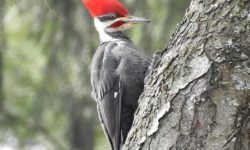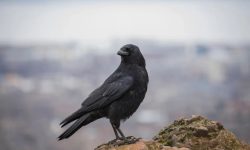White peacocks are among the most stunning and elegant birds in the world. With their pure white plumage and graceful movements, they captivate bird lovers and nature enthusiasts alike. But what exactly makes these birds so unique? Are they a different species or just a variation of the more common Indian peafowl?
In this comprehensive guide, we will explore everything you need to know about white peacocks, from their genetics and habitat to their symbolism and care in captivity.
What Are White Peacocks?

White peacocks are not a separate species but a striking color variant of the Indian peafowl (Pavo cristatus). Their dazzling white feathers make them appear ethereal, but this unique coloration is not due to albinism. Instead, it results from a genetic condition called leucism, which causes a partial loss of pigmentation in their feathers while leaving their eye color unchanged. Unlike albino animals, which lack melanin entirely and have pink or red eyes, white peacocks typically have blue or brown eyes, just like their more colorful counterparts.
Leucism vs. Albinism
A common misconception is that white peacocks are albino. However, leucism and albinism are two distinct genetic conditions:
- Leucism: A partial loss of pigmentation that affects the feathers but does not impact the eyes. This condition leads to completely white plumage while maintaining normal eye coloration.
- Albinism: A complete absence of melanin, resulting in white feathers, pink skin, and red or pink eyes due to the lack of pigment in the iris.
Since white peacocks retain their normal eye color, they are considered leucistic rather than albino. Their leucistic feathers give them an elegant, ghostly appearance that makes them stand out, especially when they spread their magnificent tails. Despite their lack of vibrant colors, white peacocks are just as genetically healthy and capable of survival as their brightly colored counterparts.
Habitat and Natural Range
White peacocks share the same habitat as their colorful relatives, the Indian peafowl (Pavo cristatus). They are native to South Asia, particularly India and Sri Lanka, where they thrive in a variety of environments. These birds are well-adapted to warm climates and are commonly found in:
- Dry deciduous forests – These forests provide ample tree cover for roosting and open areas for foraging. The moderate vegetation offers both protection from predators and access to food sources such as seeds, insects, and small reptiles.
- Grasslands – Peafowl are ground-dwelling birds that rely on open spaces to search for food. Grasslands provide the perfect environment for foraging while still offering nearby trees for perching and safety.
- Agricultural areas near human settlements – Indian peafowl often live near villages and farms, where they feed on crops, insects, and small creatures. They have a long history of coexisting with humans and are even considered sacred in some cultures.
- Gardens and palace grounds – In India, peafowl have historically been kept in palace gardens and temple grounds, where they are admired for their beauty and symbolism in mythology and culture.
White Peacocks in the Wild vs. Captivity
Due to their entirely white plumage, white peacocks have a significant disadvantage in the wild. Their bright feathers make them more visible to predators, reducing their chances of survival in natural settings. As a result, they are rarely found in the wild and are primarily bred in captivity.
Today, white peacocks are commonly seen in zoos, aviaries, and private estates, where they are selectively bred for their unique coloration. Many estates, botanical gardens, and wildlife sanctuaries keep them as ornamental birds, showcasing their elegant appearance to visitors. While they may not be common in the wild, white peacocks continue to captivate people worldwide with their majestic beauty.
The Genetic Basis of White Peacocks
White peacocks owe their stunning coloration to a genetic mutation that affects melanin production in their feathers. This condition, known as leucism, is caused by a recessive gene that results in a lack of pigmentation while still allowing normal eye coloration. For a peacock to be born white, it must inherit the leucistic gene from both parents.
Since leucism is a recessive trait, a peacock with only one copy of the gene will not appear white but can pass the gene to its offspring. When two white peacocks mate, their chicks will always be white because both parents contribute the recessive gene.
Can Regular Peacocks Produce White Offspring?
Yes! A standard blue Indian peacock (Pavo cristatus) can produce white offspring if it carries the leucistic gene and mates with another carrier. In such cases, the offspring have the following genetic possibilities:
- 25% chance of being white (inherits the leucistic gene from both parents)
- 50% chance of being a normal-colored peacock but carrying the white gene (inherits the gene from one parent)
- 25% chance of being a fully pigmented peacock without carrying the leucistic gene
This means that even if two normally colored peacocks are paired, they can unexpectedly produce a white chick if both parents are hidden carriers of the leucistic gene. However, if one parent lacks the gene entirely, no white offspring will be produced.
Selective breeding in captivity ensures the continued existence of white peacocks. Breeders intentionally pair birds carrying the leucistic gene to maintain this beautiful color variation, which would otherwise be rare in the wild.
Diet and Feeding Habits
White peacocks have the same dietary habits as their colorful counterparts, the Indian peafowl (Pavo cristatus). As omnivores, they consume a varied diet that includes both plant and animal matter, allowing them to thrive in diverse environments. Their natural diet consists of:
- Seeds and grains – A primary food source, including millet, wheat, corn, and rice, which provide essential carbohydrates and energy.
- Fruits and berries – They feed on wild fruits, figs, and berries, which supply important vitamins and antioxidants for overall health.
- Insects – Protein-rich insects such as grasshoppers, ants, termites, and beetles make up a significant portion of their diet, especially during breeding seasons when extra nutrition is needed.
- Small reptiles and amphibians – Occasionally, white peacocks prey on small lizards, frogs, and even snakes, showcasing their opportunistic feeding behavior.
Feeding Habits in the Wild vs. Captivity
In the wild, white peacocks (and peafowl in general) forage on the ground, using their sharp beaks to pick through leaf litter and soil in search of food. They are highly adaptable and can adjust their diet based on seasonal availability, making them well-suited to various habitats, from forests to farmlands.
In captivity, white peacocks are provided with a balanced diet to maintain their health and feather quality. Their diet typically includes:
- Commercial poultry feed or game bird pellets for essential nutrients
- Grains like corn, wheat, and millet for carbohydrates
- Fresh vegetables such as leafy greens and carrots for fiber and vitamins
- Protein supplements, mealworms, or cooked eggs to support feather growth and overall vitality
Proper nutrition is especially crucial during molting seasons, as peacocks require extra protein to regenerate their magnificent plumage. Whether in the wild or in captivity, a well-rounded diet ensures that white peacocks remain healthy and continue to display their iconic elegance.
Mating and Reproduction
White peacocks follow the same reproductive patterns as regular Indian peafowl (Pavo cristatus), with elaborate courtship displays, territorial behavior, and dedicated parental care. Their mating season typically occurs during the warmer months, often influenced by rainfall and food availability.
Courtship Behavior
Male white peacocks, like their colorful counterparts, engage in an elaborate courtship display to attract females. Although they lack the vibrant blues and greens of regular peacocks, their pure white plumage creates a striking visual effect. During courtship, the male:
- Fans out his long, shimmering white tail feathers into a magnificent display
- Performs a rhythmic dance, shaking his feathers to create a rustling sound
- Emits loud, high-pitched calls to announce his presence and attract potential mates
- Turns in different directions to ensure the female gets the full view of his spectacular display
Peahens (female peafowl) carefully observe the males before selecting a mate. They tend to choose partners with the largest, most symmetrical tail displays and the most energetic courtship dances, as these traits indicate genetic fitness.
Egg Laying and Incubation
After mating, the female white peacock (peahen) seeks out a secluded spot on the ground, often hidden in tall grass or under bushes, to lay her eggs. White peahens are just as capable of nesting and raising chicks as regular peafowl.
- Clutch size: The female typically lays 4 to 6 eggs per clutch.
- Incubation period: The eggs take about 28 days to hatch. During this time, the mother remains dedicated to keeping them warm and protected from predators.
- Male’s role: Unlike many bird species, male peacocks do not assist in incubation or chick-rearing.
Chicks and Development
When white peacock chicks hatch, they are covered in light-colored down that provides warmth and protection. As they grow, their feathers gradually develop into pure white plumage. Their appearance may resemble regular peafowl chicks at first, but within a few weeks, the leucistic trait becomes more evident.
By the time they reach two to three years old, young males will have developed their full train of white tail feathers and will be ready to display and attract mates. White peacocks follow the same life cycle as other Indian peafowl, living up to 15-20 years in captivity and slightly less in the wild due to natural predators.
Symbolism and Cultural Significance
White Peacocks in Mythology and Religion
White peacocks are revered in various cultures:
- Hinduism: Associated with Saraswati, the goddess of wisdom and purity.
- Buddhism: Represent enlightenment and spiritual awakening.
- Western Symbolism: Often seen as symbols of grace, divinity, and peace.
Use in Art and Literature
White peacocks have been depicted in paintings, poetry, and royal emblems throughout history. Their ethereal beauty makes them a popular subject in decorative art.
Keeping White Peacocks in Captivity
White peacocks are often kept in zoos, sanctuaries, and private estates. However, they require specific care to thrive in captivity.
Housing and Space Requirements
- Large enclosures with at least 100 square feet per bird
- Perches and sheltered areas for protection from the elements
- Fencing to prevent escape and protect from predators
Health and Veterinary Care
- Routine vaccinations and parasite control
- Regular check-ups to monitor for diseases like avian flu and Newcastle disease
- A balanced diet to prevent nutritional deficiencies
Can You Keep a White Peacock as a Pet?
While white peacocks can be kept as pets, they require ample space and proper care. They are best suited for large farms or estates rather than urban homes.
Interesting Facts About White Peacocks
- Not All White Peacocks Are Born Pure White – Some may have light markings that fade as they mature.
- Their Call is Just as Loud as Regular Peacocks – Despite their elegant appearance, they produce loud, high-pitched calls.
- They Can Live Over 20 Years – With proper care, they have a long lifespan.
- They Are Popular in Royal Gardens – Many historical palaces and gardens have kept white peacocks as symbols of luxury.
- Their Tail Feathers Can Reach Up to 6 Feet Long – Just like regular peacocks, their extravagant train is a key feature.
Conclusion
White peacocks are truly fascinating creatures, embodying beauty, elegance, and cultural significance. Whether admired in a zoo, private estate, or artwork, their ethereal presence continues to captivate people worldwide. Though they are a color variant of the Indian peafowl, their unique genetics, symbolism, and rarity make them special.
If you are considering keeping a white peacock, ensure you have the necessary space, resources, and commitment to provide proper care. With the right environment, these majestic birds can thrive and continue to enchant those who see them.






